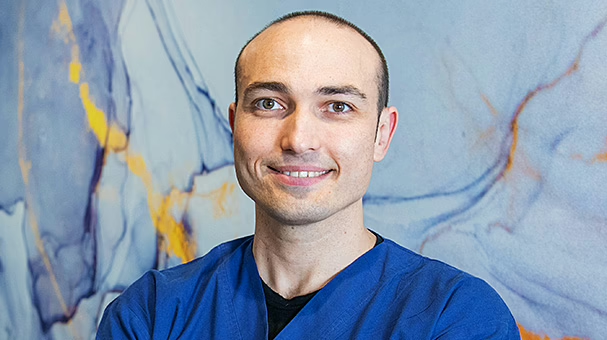Treatment
In many cases, pterygium treatment involves the use of simple eye drops to manage symptoms, such as inflammation, mild pain, itching or a feeling of having grit in the eye. Pterygium treatment for a minor irritation includes eye drops or ointments that help to lubricate and soothe the cornea. For severe inflammation, you may be prescribed a short course of steroid eye drops. These medications only ease the symptoms and are not a cure.
Pterygium surgery
If the growth is significant and continues to spread across the cornea or causes other problems, pterygium removal is usually recommended to eliminate associated symptoms and avoid adverse effects on vision. Some people choose to have pterygium surgery for cosmetic reasons. Using modern micro-surgical techniques, the surgeon will carefully remove the pterygium. It is replaced with a graft of healthy tissue taken from the same eye, which is fixed into place using stitches and/or special glue. There is a chance that the condition may recur following pterygium surgery, but the process of grafting helps to prevent this.
Prevention
- When outdoors, wear good-quality, wrap-around sunglasses as recommended by an optometrist. Choose sunglasses that meet the Australian Standard and have an EPF UV rating of either 9 or 10.
- Surfers and others involved in water sports should always wear sunglasses during these activities.
- A wide-brimmed hat will also protect your eyes from sun and wind exposure.
Clinic team
NSW
-
SA
-

Dr Paul Athanasiov
MBBS FRANZCO MMed (OphthSc) MOphth
Locations
- North Adelaide
- Windsor Gardens
- Kurralta Park
Book a consultationwith Dr Paul Athanasiov
Dr Simone Beheregaray
MD PHD FRANZCO
Locations
- North Adelaide
- Windsor Gardens
- Whyalla
- Brisbane
Book a consultationwith Dr Simone Beheregaray
Dr Soo Khai Ng
MBBS FRANZCO
Locations
- Kurralta Park
- North Adelaide
- Windsor Gardens
- Elizabeth
- Whyalla
Book a consultationwith Dr Soo Khai NgVIC
-

Dr Uday Bhatt
MBBS DTMH DO MSc(EBP) FRCSEd FRCOphth FWCRS FRANZCO
Locations
- Camberwell
- Coburg
- Footscray
Book a consultationwith Dr Uday Bhatt
Dr Alex Ioannidis
MBBS FRCOphth FRANZCO
Locations
- Blackburn South
- Camberwell
- Coburg
Book a consultationwith Dr Alex Ioannidis

Dr Raj P Pathmaraj
MBBS DO MRCOphth MMed FRCSOphth FRANZCO
Locations
- Blackburn South
Book a consultationwith Dr Raj P PathmarajResourcesThe information on this page is general in nature. All medical and surgical procedures have potential benefits and risks. Consult your ophthalmologist for specific medical advice.
Date last reviewed: 2025-02-20 | Date for next review: 2027-02-20

-







